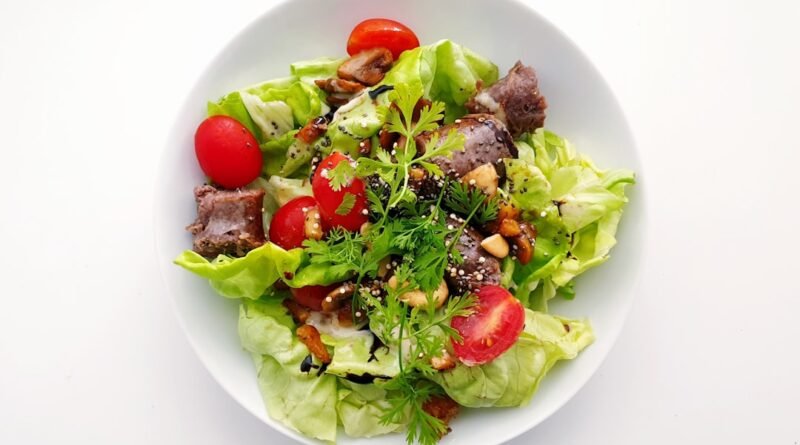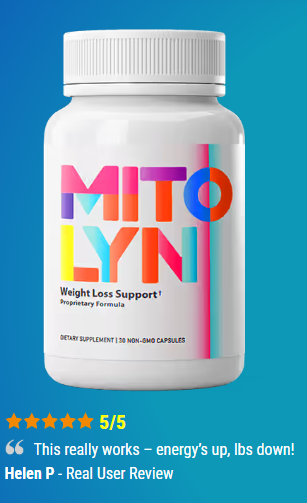Ultimate Guide to Healthy Diet for Fat Burning
Fat burning is a complex physiological process that involves the breakdown of stored fat in the body to be used as energy. This process is primarily regulated by hormones, enzymes, and the availability of nutrients. When the body requires energy, it can tap into its fat stores, particularly when in a state of caloric deficit, which occurs when energy expenditure exceeds energy intake.
The primary hormones involved in fat metabolism include insulin, glucagon, and catecholamines. Insulin, for instance, plays a crucial role in fat storage; high levels of insulin can inhibit fat breakdown, while lower levels promote it. Understanding these hormonal dynamics is essential for anyone looking to optimize their fat-burning potential.
Moreover, the body utilizes different energy sources depending on the intensity and duration of physical activity. During low-intensity activities, such as walking or light jogging, the body primarily burns fat for fuel. Conversely, during high-intensity workouts, carbohydrates become the primary energy source.
This shift highlights the importance of both aerobic and anaerobic exercises in a comprehensive fat-burning strategy. Additionally, factors such as age, gender, and metabolic rate can influence how efficiently an individual burns fat. For instance, younger individuals typically have a higher metabolic rate, which can facilitate more effective fat burning compared to older adults.
Key Takeaways
- Understanding the basics of fat burning is essential for effective weight loss.
- Choosing the right foods, such as lean proteins and high-fiber options, can aid in fat burning.
- Incorporating regular exercise, including both cardio and strength training, is crucial for maximum fat burning.
- Creating a balanced meal plan that includes a variety of nutrients is key for sustainable fat burning.
- Avoiding common pitfalls like crash diets and excessive restriction is important for long-term success in fat burning.
Choosing the Right Foods for Fat Burning
Selecting the right foods is pivotal in any fat-burning regimen. Foods that are high in fiber, protein, and healthy fats can significantly enhance the body’s ability to burn fat. Fiber-rich foods such as vegetables, fruits, legumes, and whole grains not only promote satiety but also help regulate blood sugar levels.
This regulation is crucial because stable blood sugar levels prevent spikes in insulin, which can lead to increased fat storage. For example, incorporating foods like lentils or quinoa into meals can provide a substantial amount of fiber while also delivering essential nutrients. In addition to fiber, protein plays a vital role in fat burning.
High-protein foods such as lean meats, fish, eggs, and plant-based sources like tofu and legumes can increase thermogenesis—the process by which the body generates heat and energy from digesting food. This means that consuming protein-rich meals can lead to a higher calorie burn post-meal compared to meals high in carbohydrates or fats. Furthermore, protein helps preserve lean muscle mass during weight loss, which is essential since muscle tissue burns more calories at rest than fat tissue does.
Therefore, a diet rich in both fiber and protein can create an optimal environment for fat burning.
Incorporating Exercise for Maximum Fat Burning
Exercise is a cornerstone of any effective fat-burning strategy. Engaging in regular physical activity not only helps create a caloric deficit but also enhances metabolic rate through increased muscle mass and improved cardiovascular health. Aerobic exercises such as running, cycling, and swimming are particularly effective for burning calories and promoting fat loss.
These activities elevate heart rate and encourage the body to utilize fat as a primary energy source during prolonged sessions. For instance, a 30-minute jog can burn hundreds of calories while simultaneously improving cardiovascular endurance. In addition to aerobic exercise, incorporating strength training into a fitness routine is crucial for maximizing fat burning.
Resistance training builds muscle mass, which in turn increases resting metabolic rate—meaning that even at rest, individuals with more muscle burn more calories than those with less muscle. Compound movements like squats, deadlifts, and bench presses engage multiple muscle groups and are particularly effective for building strength and muscle mass. Moreover, high-intensity interval training (HIIT) has gained popularity for its efficiency in burning fat.
HIIT involves short bursts of intense exercise followed by brief recovery periods, leading to an elevated heart rate and increased calorie burn both during and after the workout.
Creating a Balanced Meal Plan for Fat Burning
| Meal | Food Group | Portion Size | Calories | Protein (g) | Carbs (g) | Fat (g) |
|---|---|---|---|---|---|---|
| Breakfast | Protein (e.g. eggs, Greek yogurt) | 2 eggs or 1 cup yogurt | 150 | 12 | 6 | 8 |
| Snack | Fruit (e.g. apple, banana) | 1 medium fruit | 80 | 1 | 20 | 0 |
| Lunch | Vegetables (e.g. spinach, broccoli) | 2 cups raw vegetables | 50 | 3 | 10 | 0 |
| Snack | Nuts or seeds (e.g. almonds, pumpkin seeds) | 1/4 cup | 200 | 6 | 8 | 18 |
| Dinner | Lean protein (e.g. chicken, fish) | 4 oz | 200 | 25 | 0 | 10 |
A balanced meal plan is essential for effective fat burning and overall health. Such a plan should include a variety of food groups to ensure that all nutritional needs are met while promoting fat loss. A well-structured meal plan typically consists of lean proteins, whole grains, healthy fats, and plenty of fruits and vegetables.
For example, a daily meal plan might include grilled chicken breast with quinoa and steamed broccoli for lunch, followed by a dinner of baked salmon with sweet potatoes and asparagus. This combination provides essential nutrients while keeping caloric intake in check. Portion control is another critical aspect of creating a balanced meal plan.
Even healthy foods can contribute to weight gain if consumed in excessive amounts. Utilizing tools such as measuring cups or food scales can help individuals better understand portion sizes and maintain appropriate caloric intake. Additionally, planning meals ahead of time can prevent impulsive eating decisions that often lead to unhealthy choices.
Meal prepping for the week can ensure that nutritious options are readily available and reduce the temptation to opt for convenience foods that may be high in sugars and unhealthy fats.
Avoiding Common Pitfalls in Fat Burning Diets
While embarking on a fat-burning journey, individuals often encounter various pitfalls that can hinder progress. One common mistake is adopting overly restrictive diets that eliminate entire food groups or drastically reduce caloric intake. Such approaches can lead to nutrient deficiencies and may trigger binge eating or cravings for forbidden foods.
Instead of extreme dieting, focusing on moderation and balance is more sustainable in the long run. Allowing occasional treats can help maintain psychological well-being while still adhering to overall dietary goals. Another pitfall is neglecting hydration.
Water plays a crucial role in metabolism and can aid in the fat-burning process by promoting optimal bodily functions. Dehydration can lead to fatigue and decreased performance during workouts, ultimately hindering progress toward fat loss goals. It is recommended to drink adequate amounts of water throughout the day and consider hydration before, during, and after exercise sessions.
Additionally, many people overlook the importance of sleep in their fat-burning journey; insufficient sleep can disrupt hormonal balance and increase cravings for unhealthy foods.
Incorporating Healthy Fats for Fat Burning
Contrary to popular belief, not all fats are detrimental to health or weight loss efforts; in fact, healthy fats are essential for optimal bodily function and can aid in fat burning. Sources of healthy fats include avocados, nuts, seeds, olive oil, and fatty fish like salmon and mackerel. These fats provide essential fatty acids that the body cannot produce on its own while also promoting satiety—helping individuals feel full longer after meals.
Including healthy fats in a diet can also enhance nutrient absorption; certain vitamins (A, D, E, and K) are fat-soluble and require dietary fats for proper absorption. For instance, adding a drizzle of olive oil to a salad not only enhances flavor but also ensures that the body effectively absorbs the nutrients from the vegetables. Furthermore, omega-3 fatty acids found in fatty fish have been shown to reduce inflammation and may support metabolic health—factors that are beneficial for those looking to burn fat effectively.
Understanding the Role of Protein in Fat Burning
Protein is often hailed as a key player in any successful fat-burning strategy due to its unique properties that support weight loss efforts. One significant advantage of protein is its high thermic effect; this means that the body expends more energy digesting protein compared to carbohydrates or fats. As a result, incorporating adequate protein into meals can lead to increased calorie expenditure throughout the day.
Moreover, protein plays an essential role in preserving lean muscle mass during weight loss. When individuals lose weight without sufficient protein intake or resistance training, they may lose both fat and muscle mass—a scenario that can slow down metabolism over time. To counteract this effect, it is advisable to include protein-rich foods at every meal; options such as chicken breast, Greek yogurt, legumes, and eggs are excellent choices that provide both satiety and essential amino acids necessary for muscle repair and growth.
Staying Consistent and Motivated in Your Fat Burning Journey
Consistency is paramount when it comes to achieving long-term fat-burning goals. Establishing a routine that incorporates healthy eating habits and regular exercise can help individuals stay on track even when faced with challenges or setbacks. Setting realistic goals—such as aiming for gradual weight loss rather than rapid results—can foster a sense of accomplishment over time and reduce feelings of frustration.
Motivation can also be bolstered by tracking progress through various means such as journaling food intake or using fitness apps to monitor workouts and caloric expenditure. Celebrating small victories along the way—whether it’s fitting into an old pair of jeans or completing a challenging workout—can reinforce positive behaviors and keep individuals engaged in their journey toward better health. Additionally, seeking support from friends or joining community groups focused on fitness can provide encouragement and accountability throughout the process.
If you’re looking for effective ways to burn fat fast, you may want to check out this article on the 10 Effective Ways to Burn Fat Fast. This article provides valuable tips and strategies to help you achieve your weight loss goals. In addition, incorporating a healthy diet is crucial for burning fat and achieving a slimmer waist. For more information on the ultimate belly fat burner, be sure to read this article on The Key to a Slimmer Waist. By combining these resources, you can create a comprehensive plan to improve your overall health and fitness.

